Charity fundraising groups heading for the summits of Britain’s peaks increase the workload for mountain rescue teams in those honeypot areas.
The eager would-be summiteers are often oblivious to how serious conditions on the UK’s relatively low-altitude mountains can be.
And the irony is: the men and women who come to their aid are themselves charity members who, when not rescuing hapless hillgoers can often be found rattling tins to fund their own volunteer teams.
Llanberis Mountain Rescue Team is one of the busiest teams. Its patch covers Snowdon, the magnet for many a ‘fun’ ascent to raise cash for good causes.
Here, chairman John Grisdale gives his view of the crowds who pound the paths up the 1,085m (3,560ft) mountain each year.
Excitement, supporting a worthwhile cause, undertaking a physical challenge, having fun with friends, providing a sense of camaraderie are often quoted as reason why people take part in mountain challenges and sponsored events.
In fact they are the some of the reasons why I, over the years, have taken part in fundraising events by walking over the summits.
This summer thousands will echo my comments about why they take part and probably will also reflect on elements of blood, sweat and tears in equal parts.
The organisers of the larger charity events have usually prepared well; they provide their fundraisers with preparatory information, marshals en route, radio communication and safety support on the mountain together with strict guidelines about mountain safety, clothing and food.
They reflect what is accepted as best practice for charity and sponsored events on Snowdon. Visit the Llanberis Mountain Rescue Team’s website for further details.
When planning my own sponsored mountaineering events I always anticipated that the weather on the day would be calm, sunny with a few wispy clouds and most definitely warm, not hot temperatures.
Seldom did that dream come true. I’m sure this expectation is so true of many of the participants who travel to Snowdonia, so check out the Met Office mountain weather report for Snowdonia.
Over recent years the annual numbers of walkers on Snowdon has increased year on year.
From May throughout the summer weeks buses and minibuses unload their excited, enthusiastic members of our urban communities.
They are usually eager, high spirited young people, chomping at the bit to reach the summit of the highest mountain in Wales and England.
Their excited tones and laughter give voice to their anticipation of an event which to most will be their first walk on a mountain of any height. These groups are often quite distinctive because they wear uniforms of bright t-shirts, coloured wigs, fluorescent sashes or grass skirts – usually worn by the male of the species.
They are really up for it: with cameras clicking and mobiles recording, they Facebook their way towards the summit.
Snowdon as a summit is recognised to be a honeypot. After all in summer there is a railway to the summit and a cafe to provide shelter if, weather permitting, the train is able to reach the summit station. Therefore, it might be considered to be a ‘safe’ summit and this might be perfectly true if one considers that about 500,000 people will reach the summit annually.
It puts into perspective the relatively small numbers of incidents that the Llanberis Mountain Rescue Team, often supported by the RAF helicopter from Valley attends to annually. Last year the total number of incidents was 183 and to date this year the total has reached 90.
Thankfully the vast majority achieve their goal with a sense of satisfaction with huge smiles on their faces and a few blisters on their feet.
My apprehension about these ‘fun’ groups of walkers is based on their lack of understanding about the mountain environment.
The potential for mishap, if conditions are less than perfect, increase greatly and during this year’s ‘fun’ season. The team has been called to several cases of novice mountaineers who have met with less than perfect conditions.
On Snowdon less than perfect conditions usually equate to poor weather conditions: heavy rain, strong winds and thick mist combined with the group’s unwillingness to amend its plans.
All of these can lead to mishaps. Their experience would be so much better and more satisfying if greater attention was given to their preparation; checking the weather forecast for the summits, wearing more appropriate footwear and clothing and carrying basic group safety equipment.
Sometimes their ignorance of mountain weather conditions together with their arrogance towards their own and their group’s safety beggar belief.
These ‘fun’ groups might well have raised considerable and valuable funds for their chosen charities but they should also consider the cost and implications of all mountain rescue incidents if only in the personnel hours spent in recovering casualties.
Adopting safe hillwalking practice would help reduce the number of incidents the Llanberis Mountain Rescue Team attends to every year on Snowdon. Unfortunately as the number of ‘fun’ groups increase year on year so do the number of callouts for the team.
The team is a charity made up of volunteer mountaineers who are willing to turn out in all weather conditions day or night to assist those who become lost or who are injured on Snowdon and its surrounding peaks.
Members appreciate that, as mountaineers they have responsibility for their own safety. They prepare for poor weather and have the utmost respect for the potential dangers presented on the mountain.
However, responding to incidents involving mishaps to members of ‘fun’ groups who are badly prepared and who show total disrespect and arrogance towards the mountain can, in itself, be quite challenging for team members.
If your ‘fun group’ falls into this category, may I in advance kindly ask that you excuse our members’ lack of small talk and political correctness when recovering you from the mountain.
With 90 callouts to date this year, sometimes attending to three or four incidents in one day, the experience is wearing thin, in particular when the call out is to another poorly prepared and badly planned group event.
I heartily applaud every ‘fun’ group’s motives and commitment to their cause; I congratulate them on their achievements and wish them fun on their mountain adventure.
However, please plan; prepare; be responsible and in particular respect the mountains so that everyone in the group can enjoy the experience in safety.
Groups might consider the following top tips:
- Plan and prepare well in advance
- Check the mountain weather forecast
- Have appropriate footwear and clothing
- Be prepared to change your goals according to conditions
- Have a person who can navigate with a map and compass
- In mist, keep the group together
- Mobile phones do not always work in the mountains
- The descent is often more difficult than the ascent
- Consider the support of professional mountain instructors.
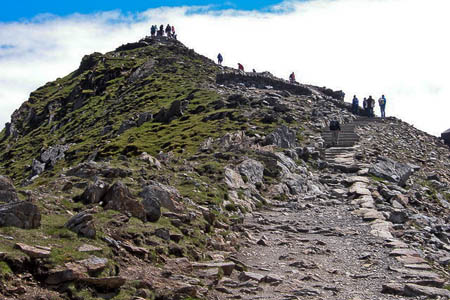
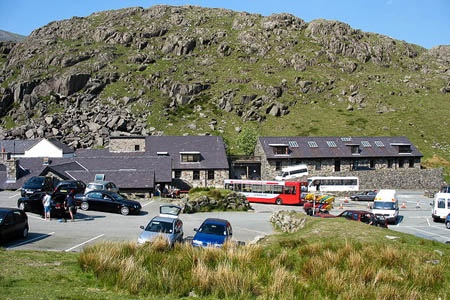
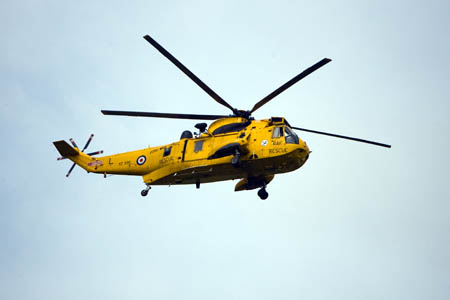
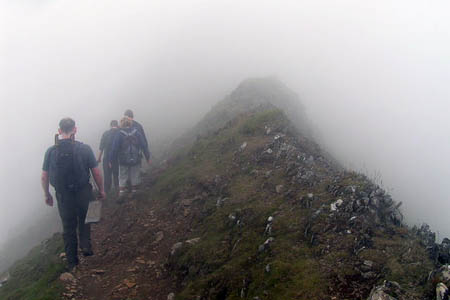
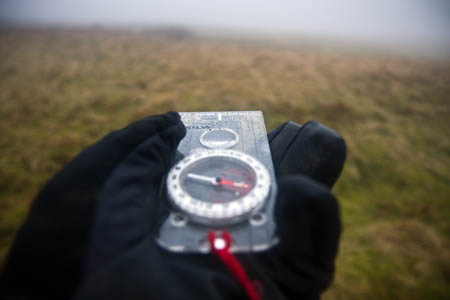
Mike Gullen
13 July 2012Well said!
Terrier
17 July 2012Hard to disagree with but people will always do the events unprepared and maybe the people or charities who arrange these events should take more responsability.When you do a mountain marathon event you are advised to be mindful that self resilence is part of the game.I do believe at times maybe MRT need to prioritise what resources are required once the Police task them?A Seaking to lift 2 people who are exhusted on a path is a bit of overkill and get them walked off.The ease of rescue i feel does lend itself to people ringing as soon as the mist comes in.Ring them back and no injuries? Right wait until it clears follow the big path with hundreds of folk on it and start walking! Very rare we get those sort of incidents in Scotland where we have proper mountains with very few real paths and let people sort it out themselves.
Richard Warren
17 July 2012Good article grough and some very good points from John Grisedale - the article I will keep for future enquiries about the three peaks challenge. Scafell Pike is bang in the middle between Snowdon and the Ben so many tackle during hours of darkness if doing in 24 hours. The Wasdale team will only task for injuries or when life is at at risk (or it becomes obvious for those who are 'lost' are potentially at risk if they are not brought down safely - some are too distressed to move up or down).
Respect for the environment and the mountain seems to be low on the priority list of many and the challenge seems to run throughout the year from January through to December. The most bizare recent example (June) of unpreparedness was a walker coming into the bar at Wasdale Head and asking the barman where the start of Scafell Pike was. He was asked if he had a map (no), a compass (no) a torch (no).
It was sensibly suggested that he should not tackle the mountain.
Food for thought?
[Noting that that many peakers are very responsible and do respect our mountains, the weather and the valley bottoms]
Richard Warren
Chairman Wasdale MRT
Bill Pattison MBE
22 July 2012From Britains finest view to Europes biggest open toilet ,yes thats Wasdale Head the authorities have shunted the problem around for over 30 years and achieved absolutely nothing but a stinking eyesore .The role of the Park Authority and the Trust was meant to protect and preserve areas of Natural Beauty but have allowed Wasdale head and Scafell Pike to become a litter strewn open toilet.It wouldnt happen in Borrowdale.Grasmere or any other valley in the Lakes The residents of Wasdale have had enough,come on do the job you are meant to do and sort it out.Ok they do The Three Peaks for Charity but what % do the charities actually get,very little ,there are lots of companies making money off the backs of these charities,running treks every weekend from March to November and during winter when requested.I have walked and climbed on the Pike for over 60 years but now choose not to go there ,its nauseating.Get a grip authorities and get it sorted .
Rob B
23 July 2012I was walking up in the Highlands this weekend. We saw a large family group on a 4 day trek and although they seemed well prepared and drilled, one teen was wearing a pair of those "foot glove" shoes (which strike me as being glorified flip flops) to climb a Munro.
Later, in McDonalds in Fort William, a young man refuelling before heading down to the Scafell Pike leg of the 3 Peaks asked us which of the three was the hardest and I just couldn't quite believe the group hadn't done some reconnaissance trips as part of their training.
The week prior,as me and some friends set off to do the Yorkshire 3 Peaks, I over heard one overweight and out of shape straggler who was part of an organised Charity group state that she was "already hating this". The time was 7:30am and we were just leaving the tarmacced track at the start of the climb up Pen y Ghent!
That came a few weeks after I had helped a lost pair of stragglers who found themselves lost in the boggy stretch below Pen y Ghent without a map, compass, gps or clue! I was doing reconnaisance trip and marking gps points.
To make my point - charities who encourage people to do these walks (and they are great and I have raised over £4000 doing these walks) should really forewarn people how hard these walks are and the need for training and reconnaisance in advance, as well as navigation tools, adequate nutrition and proper equipment and clothing.
Steve Haden
24 July 2012Maybe it's time that Charities organising such events are legally bound to supply would be 'fun' climbers propper literature and basic navigation information, and insist on map and compass.
Bill Pattison MBE
25 July 2012A map and compass are no use if their owners cannot use them as is often the case, same applies to GPS. Ihave assisted people having all three who hadnt a clue where they were including being on Great Gable when they were sure they were on Scafell Pike.